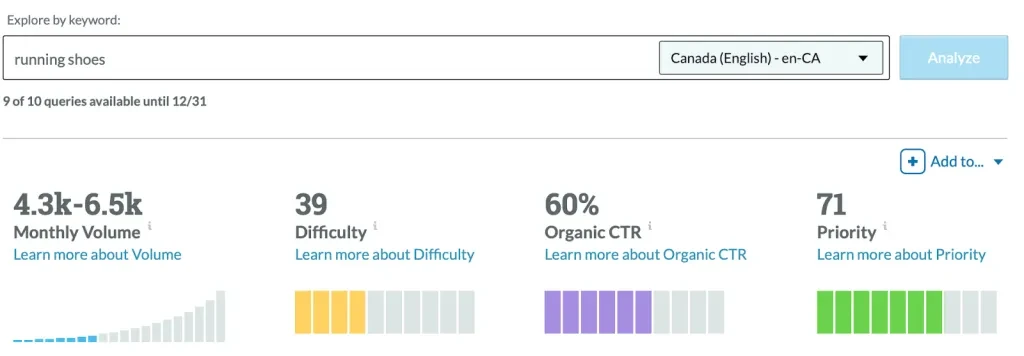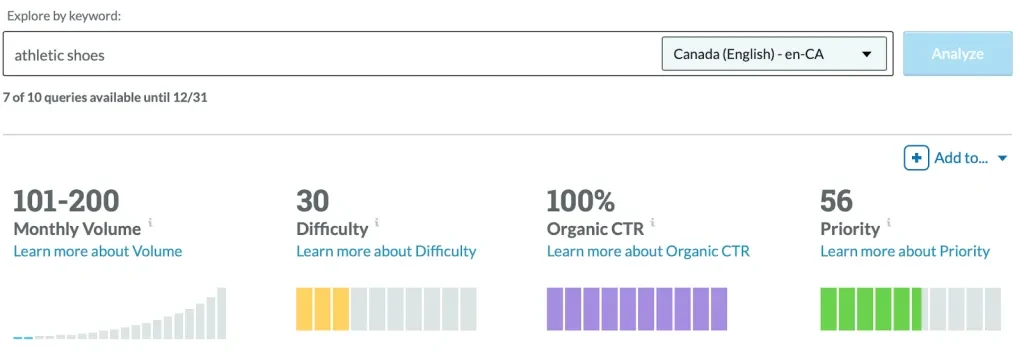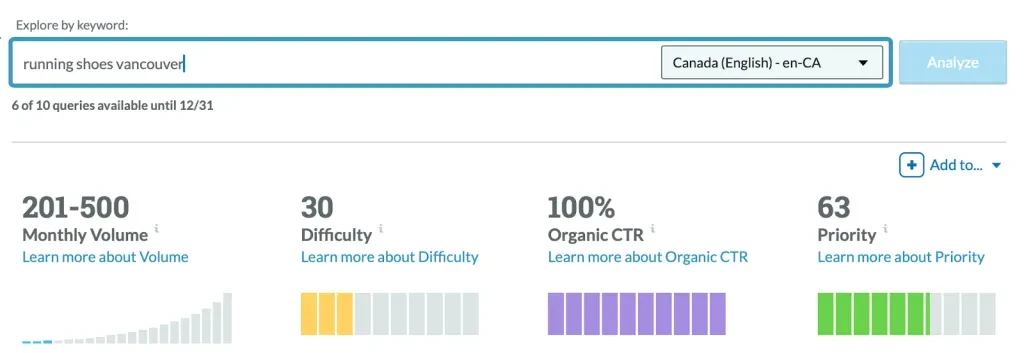If you’ve ever done business blogging, you’ve probably heard of keyword research. But what does the keyword research process really look like, and why does it matter? Keywords play a critical role in search engine optimization, but that’s not all – keyword research can help you build an effective blog creation strategy to ensure you create quality content that will resonate with your audience.
Here, we dive into the world of keyword research and provide you with everything you need to know to get started.
Table of Contents
Why keyword research matters for business blogging
Getting started with keyword research
Analyzing and selecting keywords
Implementing keywords in content
Monitoring and adapting your keyword strategy
Final thoughts
Why keyword research matters for business blogging
Keywords are the foundation of search engine optimization (SEO). Effective keyword research allows you to identify the terms and phrases your target audience is searching for, enabling you to tailor your content to meet their needs.
Here’s why keyword research matters when it comes to writing blog content:
- Boosts search engine ranking:
- Search engines use complex algorithms to determine the relevance and authority of content. By strategically incorporating relevant keywords into your blog posts, you increase the likelihood of your content ranking higher in search engine results pages (SERPs).
- Higher rankings mean more visibility, and more visibility translates to increased organic traffic.
- Targeted audience engagement:
- Knowing the keywords your audience uses allows you to create content that directly addresses their questions, concerns, and interests.
- By aligning your content with user intent, you increase the chances of attracting a highly targeted audience genuinely interested in your products or services.
- Content planning and creation:
- Keyword research is a powerful tool for content planning. It helps you identify content gaps, popular topics, and emerging trends in your industry.
- With this knowledge, you can create a content calendar that addresses your audience’s needs while staying ahead of the competition.

Getting started with keyword research
Before diving into keyword research, it’s crucial to have a clear understanding of your business goals and your target audience – what products or services do you offer, and what are your target markets? Your business goals will guide your keyword research and ensure you focus on terms that align with your objective.
Then determine your seed keywords as this is where you will begin your keyword research. Seed keywords are broad terms related to your business, products, or industry. For example, if you run an online store selling athletic shoes, your seed keywords could be “athletic shoes,” or “running shoes.”
Analyzing and selecting keywords
Once you’ve selected your seed keywords, use online tools like Google Keyword Planner, Ahref, MOZ, or SEMrush to generate a list of terms related to them. Using this list, you can then analyze which keywords to focus on.
Let’s delve deeper into the key considerations that can help you determine which keywords will be most beneficial for your business blog.
Search volume
- What it is: Search volume refers to the average number of times a specific keyword is searched for within a given timeframe (usually per month)
- Why it matters: High search volume indicates a potentially larger audience interested in that topic. However, extremely high search volumes may also mean higher competition.
- Balancing act: Strive for a balance between search volume and competitiveness. High-volume keywords might be challenging for a new blog to rank for, so consider targeting a mix of high, medium, and low-volume keywords.
As you can see from the screenshot from MOZ below, the search volume for the seed keyword “running shoes” has a monthly search volume of between 4.3k and 6.5k.

Competition
- What it is: Competition, often represented by a difficulty score in keyword research tools, indicates how challenging it is to rank for a particular keyword.
- Why it matters: High competition can make it difficult for your blog post to appear on the first page of search results. Low competition provides an opportunity to rank higher more easily.
- Strategy: Aim for a mix of high and low-competition keywords. Utilize less competitive terms to establish your blog’s authority before targeting more competitive keywords.
As you can see from the screenshot from MOZ below, the search volume for the seed keyword “athletic shoes” has between 101-200 monthly searches, but the difficulty, ie. competition, is lower.

Relevance to your audience
- What it is: Relevance helps to ensure that the selected keywords align with your target audience’s interests, needs, and search intent.
- Why it matters: Even if a keyword has high search volume and low competition, it will only benefit your blog if it’s relevant to your audience; user engagement and satisfaction are crucial for long-term success.
- User intent: Consider the intent behind the keyword. Are users looking for information, products, or solutions? Tailor your content to match the user’s intent.
MOZ also provides keyword suggestions and the relevance of such terms based on the seed keyword you have searched. For example, the suggestions for the original search “running shoes” are provided in the screenshot below:

Long-tail keywords
- What they are: Long-tail keywords are more specific and typically longer phrases. They often have a lower search volume but can be highly targeted. Using the previous shoe store example, a long-tail keyword could be “best running shoes for beginners” or “high-performance trail running shoes.”
- Why they matter: While short-tail keywords are more competitive, long-tail keywords can attract a more specific audience interested in niche topics. They also tend to have a higher conversion rate.
- Strategy: Incorporate a mix of short-tail and long-tail keywords in your content strategy. Long-tail keywords can be valuable for capturing highly motivated and specific searchers.
Other things to consider when selecting keywords
Some keywords may experience fluctuations in search volume based on seasons, trends, or events. So, understanding seasonality helps you plan and create timely content, while staying ahead of industry trends ensures your content remains relevant.
Trend analysis tools can be used to identify keywords that are gaining or losing popularity. Stay informed about industry developments to capitalize on emerging trends.
Additionally, consider including location-based keywords if your business serves specific geographic locations. Localized keywords are specific terms or phrases that include geographic indicators that target a particular location or region. They help businesses connect with their target audience in a specific location, city, region, or neighborhood. For example, a restaurant could write about “Top 10 Must-Try Dishes in [City].”

These types of keywords are crucial for businesses that operate in specific geographic areas and want to optimize their online presence in local searches.
Implementing keywords in content
Of course, keywords must then be integrated into your content. However, keyword stuffing is not advised and could be penalized by search engines for appearing to be “spammy.” Integrate the keywords naturally into the content and remember that your primary focus should be to provide valuable and engaging content to your readers.
There are a few other places in the blog where it’s essential to include keywords. These include:
- Title and headers/subheadings
- Meta description
- URL
Click here to learn more about optimizing for SEO in blogs.

Monitoring and adapting your keyword strategy
As with any marketing strategy, monitoring success and adapting your strategy is crucial to success.
One way to determine where you’re making inroads is by looking at which blogs are attracting the most traffic, indicating that they’re fine-tuned for organic search and SEO. That being said, engagement is also an indicator of success, as it’s one of the best indicators that the content resonated with the audience.
Google Analytics is a powerful tool that can be used to provide detailed insights into your website’s performance, including the keywords that are driving traffic.
Follow these steps to determine which keywords are driving traffic to your website:
- Log into Google Analytics
- Select “Your Website Property”
- Navigate to “Acquisition” > “All Traffic” > “Channels”
- Under the “Channels” report, you can see various traffic sources, including organic search
- Explore “Organic Search”
- Click on “Organic Search” to view the keywords that users used to find your website
- View “Keyword Performance”
- Google Analytics will provide a list of keywords along with metrics such as sessions, bounce rate, and average session duration. Sort the list based on the “Sessions” metric to identify the keywords driving the most traffic.

Final thoughts
Effective keyword research is a cornerstone of successful business blogging. By understanding the language of your target audience and aligning your content with their needs, you can enhance your blog’s visibility, attract a targeted audience, and ultimately achieve your business goals.
Remember that keyword research is an ongoing process that requires adaptation and refinement. Stay proactive, monitor performance metrics, and evolve your strategy to stay ahead.
For more tips on how to optimize your ecommerce journey and impact, browse related blogs on Chovm.com Reads.







